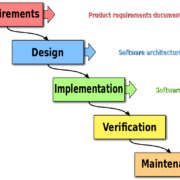You’re Ready to Develop a Mobile App. Now What?
As a forward-thinking business leader, you may have considered developing a mobile app. You could also be one of those visionaries that have a well-defined end goal in mind and planning on creating an app, which will allow you to achieve certain milestones and improve vital business processes.
However, you might not be up to speed with the latest trends in mobile app design or mobile app development in general. So what do you do now? Well, you’ve come to the right place, as we understand how intimidating it can be to forge ahead with app development. Below, we provide several handy tips that will put you on the right track.
1. Recap the basics of research, target market, and solutions
Before developing a mobile app, you’ll need to do your homework. You may already have brainstormed a couple of ideas, which you believe will result in a compelling app. But you won’t know for sure without doing market research and understanding your target audience.
Prepare a Product Market Fit (PMF) checklist and utilize App Store Optimization (ASO) to research digital marketplaces. Find out what types of apps are succeeding and what kind of users are downloading these. Learn as much as possible about these users, such as their age, gender, education, income, location, and occupation. Furthermore, determine if these apps are effectively solving problems or if there’s room in the marketplace for an improved or more innovative solution.
2. Determine which type of app will work best for your goals
It’s important to figure out early what platforms your app should target. Perhaps you need to take advantage of the Metal API for its low-level 3D rendering capabilities. In that case, you should develop a native app that specifically utilizes Apple’s unique hardware and APIs for the best results.
Nowadays, mobile app development frameworks and tools make it easy to publish on multiple platforms, such as Android, iOS, and the web. With only a single codebase, it’s possible to target all platforms that your target audience use. While this hybrid solution is more cost-effective than developing native apps, there’s usually a performance penalty.
Finally, you can develop a web application that runs on any platform connected to the internet. It’s also possible to make your web app conform to the latest trends in mobile app design, making it look and feel almost as good as a native or hybrid app. But do keep in mind that web apps are usually more limited in scope.
3. Determine monetization points & carve out project budgets
The cost of developing a mobile app varies wildly. We recommend you use a mobile application cost calculator while taking into account several factors. These should include the duration of development, back-end development, front-end development, marketing, number of target platforms, UI & UX design, and any additional app features. To ensure profitability, you’ll need to consider how you’ll monetize your app. Will you integrate In-App Purchases (IAP), mobile ads, or a combination of both?
4. Marketing for pre-launch enthusiasm
The success of your app largely depends on your marketing efforts. Press relations (PR), media outreach, and a user acquisition strategy are all equally important. Ideally, you want to build a buzz before launch, which can be achieved through content marketing, leveraging BETA testing and focus groups, and holding an exciting launch party.
5. Security & Optimization efforts
Developing a mobile app is an involved process due to the best practices that every competent developer should follow. These practices include locking down the security of an app by encrypting its data, employing high-level authentication, inserting tamper detection, using authorized APIs, utilizing the principle of least privilege, and writing secure code. It’s also vital to test the app regularly and optimize it so that it performs adequately on various devices.
6. Partners & Support
It’s always a good idea to find the right partners when embarking on mobile app development. Partners, such as NS804, can help develop, market, and support your app throughout its lifecycle. The right partner will help craft your Call to Action (CTA), which will drive the downloads you need while not straying from the latest trends in mobile app design.
In Conclusion
Mobile app development doesn’t have to be intimidating if you understand the process and partner with the right developer. With years of experience in delivering amazing results for our clients, NS804 can turn your app ideas into reality.













Leave a Reply
Want to join the discussion?Feel free to contribute!